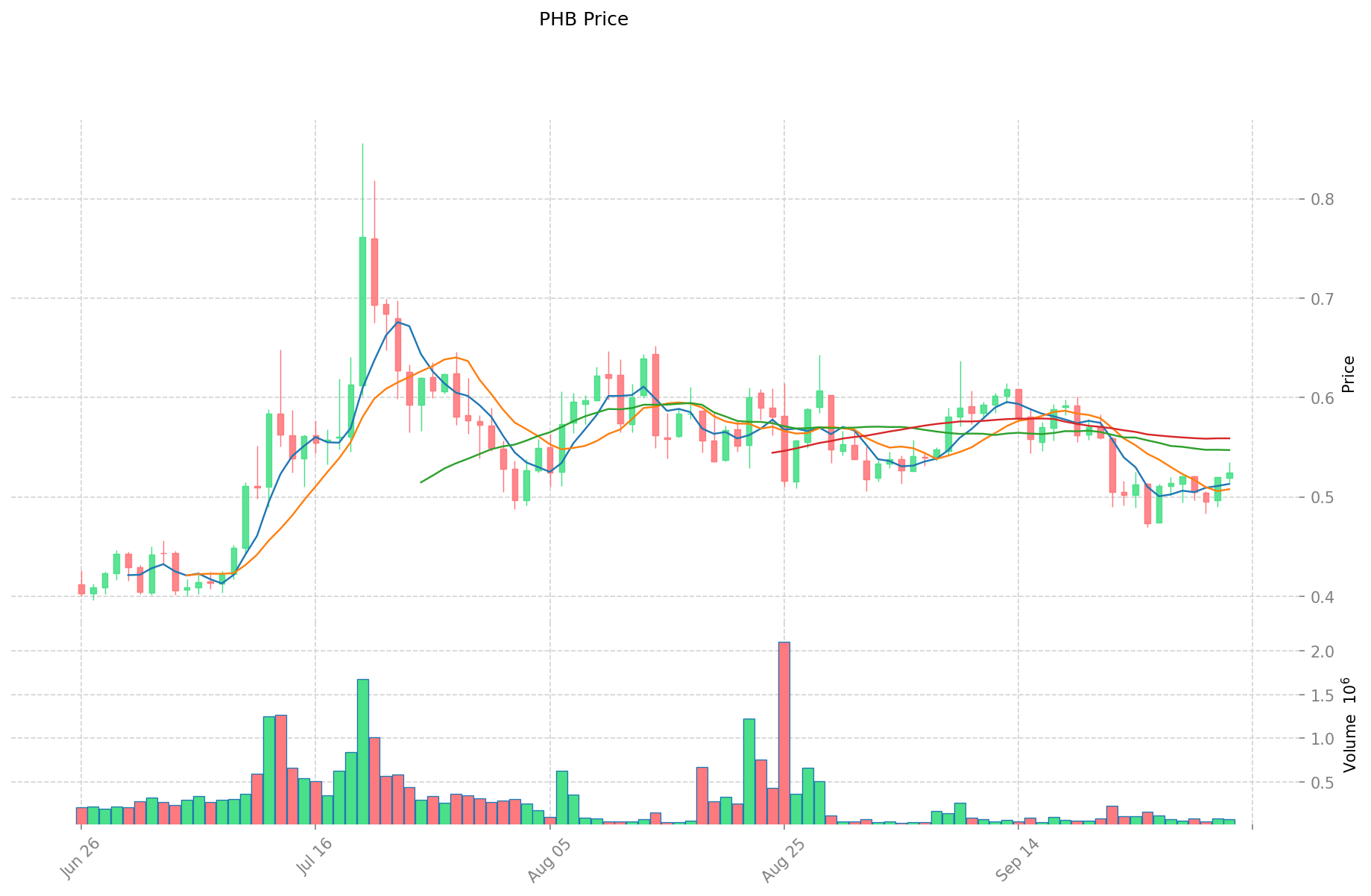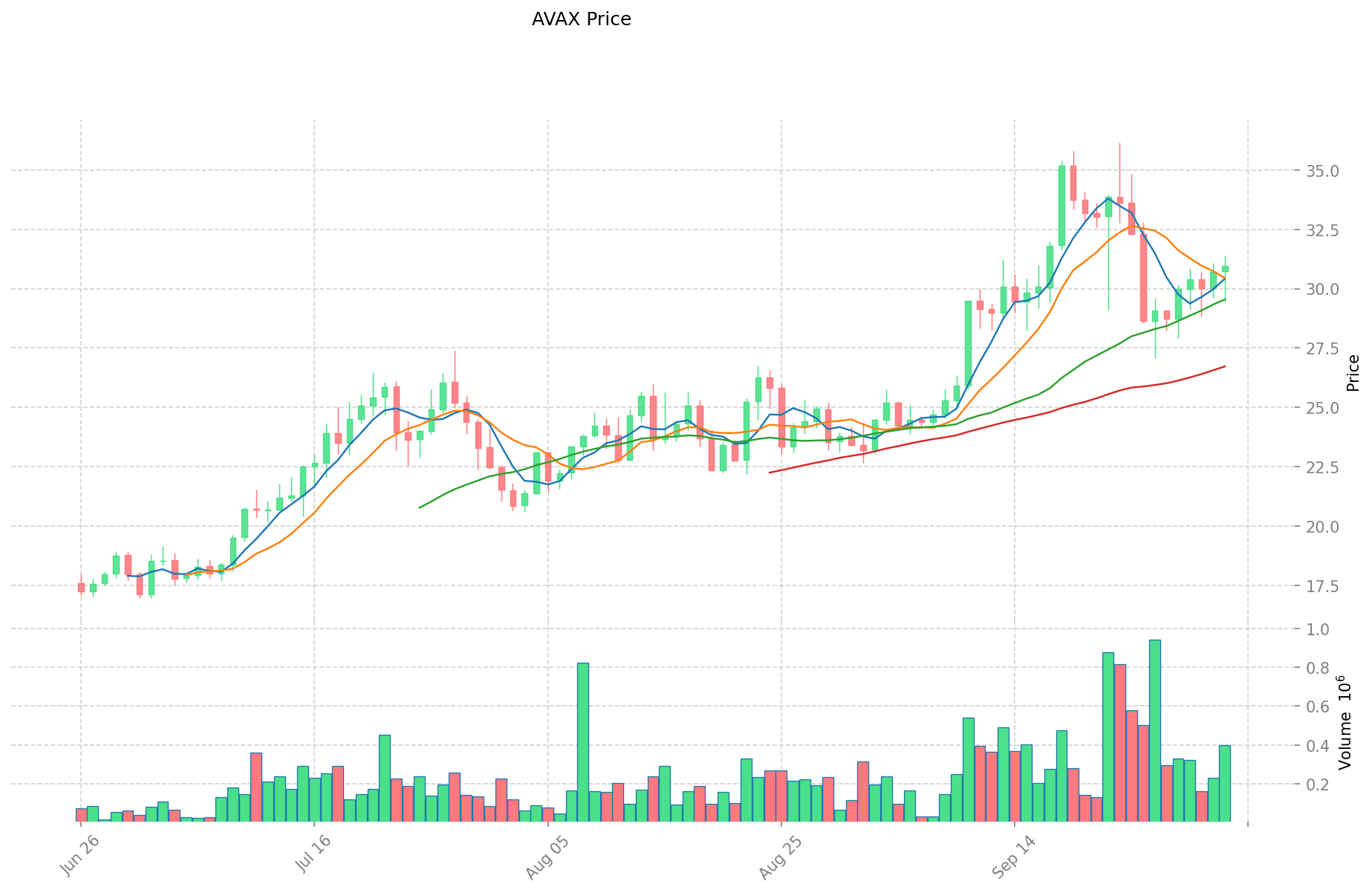PHB vs AVAX: A Comprehensive Comparison of Two Leading Blockchain Platforms in the DeFi Space
Introduction: PHB vs AVAX Investment Comparison
In the cryptocurrency market, the comparison between Phoenix (PHB) and Avalanche (AVAX) has been an unavoidable topic for investors. The two not only show significant differences in market cap ranking, application scenarios, and price performance, but also represent different positioning in the crypto asset space.
Phoenix (PHB): Since its launch, it has gained market recognition for its blockchain infrastructure empowering intelligent Web 3 applications.
Avalanche (AVAX): Introduced in 2020, it has been hailed as a platform for launching decentralized applications and interoperable blockchains, becoming one of the cryptocurrencies with high global trading volume and market capitalization.
This article will comprehensively analyze the investment value comparison between PHB and AVAX, focusing on historical price trends, supply mechanisms, institutional adoption, technical ecosystems, and future predictions, attempting to answer the question investors care about most:
"Which is the better buy right now?"
I. Price History Comparison and Current Market Status
PHB and AVAX Historical Price Trends
- 2024: PHB reached an all-time high of $4.1245 on March 9, 2024, due to significant ecosystem growth.
- 2021: AVAX hit its all-time high of $144.96 on November 21, 2021, driven by increased adoption and network upgrades.
- Comparative analysis: In the recent market cycle, PHB dropped from its peak of $4.1245 to a low of $0.05455, while AVAX declined from $144.96 to a low of $2.8, showing greater volatility in PHB's price movements.
Current Market Situation (2025-10-03)
- PHB current price: $0.5184
- AVAX current price: $30.18
- 24-hour trading volume: $73,179.31 (PHB) vs $9,778,211.93 (AVAX)
- Market Sentiment Index (Fear & Greed Index): 64 (Greed)
Click to view real-time prices:
- Check PHB current price Market Price
- Check AVAX current price Market Price


Core Factors Affecting PHB vs AVAX Investment Value
Supply Mechanisms Comparison (Tokenomics)
- PHB: Associated with Phoenix Protocol, supply mechanisms tied to uniqueness and circulating supply
- AVAX: Part of the Avalanche blockchain ecosystem with its own tokenomics structure
- 📌 Historical Pattern: Supply mechanisms drive price cyclicality in both assets based on market demand.
Institutional Adoption and Market Applications
- Institutional Holdings: Both cryptocurrencies subject to market sentiment and investment trends
- Enterprise Adoption: Comparison between PHB and AVAX usage in cross-border payments, settlements, and portfolio applications
- Regulatory Attitudes: Various regulatory approaches impact both cryptocurrencies
Technological Development and Ecosystem Building
- PHB Technical Foundation: Connected to Phoenix Protocol ecosystem
- AVAX Technical Development: Built on the Avalanche blockchain platform
- Ecosystem Comparison: Implementation status across DeFi, NFT, payments, and smart contracts
Macroeconomic Factors and Market Cycles
- Performance in Inflationary Environments: Both assets influenced by broader cryptocurrency market trends
- Macroeconomic Monetary Policy: Interest rates and USD index impacts on both assets
- Geopolitical Factors: Cross-border transaction demand and international situations affecting adoption
III. 2025-2030 Price Prediction: PHB vs AVAX
Short-term Prediction (2025)
- PHB: Conservative $0.4836 - $0.52 | Optimistic $0.52 - $0.598
- AVAX: Conservative $17.8593 - $30.27 | Optimistic $30.27 - $32.3889
Mid-term Prediction (2027)
- PHB may enter a growth phase, with expected price range of $0.4860505 - $0.71593925
- AVAX may enter a bullish market, with expected price range of $35.9834397975 - $51.4601880975
- Key drivers: Institutional capital inflow, ETF, ecosystem development
Long-term Prediction (2030)
- PHB: Base scenario $0.778244934677031 - $0.915582276090625 | Optimistic scenario $0.915582276090625 - $0.970517212656062
- AVAX: Base scenario $43.611869836007752 - $63.20560845798225 | Optimistic scenario $63.20560845798225 - $79.639066657057635
Disclaimer
PHB:
| 年份 | 预测最高价 | 预测平均价格 | 预测最低价 | 涨跌幅 |
|---|---|---|---|---|
| 2025 | 0.598 | 0.52 | 0.4836 | 0 |
| 2026 | 0.75465 | 0.559 | 0.49192 | 7 |
| 2027 | 0.71593925 | 0.656825 | 0.4860505 | 26 |
| 2028 | 0.88543294125 | 0.686382125 | 0.521650415 | 32 |
| 2029 | 1.04525701905625 | 0.785907533125 | 0.4872626705375 | 51 |
| 2030 | 0.970517212656062 | 0.915582276090625 | 0.778244934677031 | 76 |
AVAX:
| 年份 | 预测最高价 | 预测平均价格 | 预测最低价 | 涨跌幅 |
|---|---|---|---|---|
| 2025 | 32.3889 | 30.27 | 17.8593 | 0 |
| 2026 | 46.0542915 | 31.32945 | 26.316738 | 3 |
| 2027 | 51.4601880975 | 38.69187075 | 35.9834397975 | 27 |
| 2028 | 65.811002958675 | 45.07602942375 | 39.6669058929 | 48 |
| 2029 | 70.967700724752 | 55.4435161912125 | 33.2661097147275 | 83 |
| 2030 | 79.639066657057635 | 63.20560845798225 | 43.611869836007752 | 108 |
IV. Investment Strategy Comparison: PHB vs AVAX
Long-term vs Short-term Investment Strategy
- PHB: Suitable for investors focused on ecosystem potential and Web 3 applications
- AVAX: Suitable for investors seeking established platforms with diverse DeFi applications
Risk Management and Asset Allocation
- Conservative investors: PHB: 20% vs AVAX: 80%
- Aggressive investors: PHB: 40% vs AVAX: 60%
- Hedging tools: Stablecoin allocation, options, cross-currency portfolio
V. Potential Risk Comparison
Market Risk
- PHB: Higher volatility and lower liquidity
- AVAX: Subject to broader crypto market trends and competition from other smart contract platforms
Technical Risk
- PHB: Scalability, network stability
- AVAX: Network congestion during peak usage, potential security vulnerabilities
Regulatory Risk
- Global regulatory policies may impact both assets differently, with AVAX potentially facing more scrutiny due to its larger market presence
VI. Conclusion: Which Is the Better Buy?
📌 Investment Value Summary:
- PHB advantages: Potential for high growth, focus on Web 3 applications
- AVAX advantages: Established ecosystem, higher liquidity, broader adoption
✅ Investment Advice:
- New investors: Consider a smaller allocation to PHB for higher risk/reward, larger allocation to AVAX for stability
- Experienced investors: Balanced portfolio with both assets, adjusting based on risk tolerance
- Institutional investors: AVAX may be more suitable due to higher liquidity and established market presence
⚠️ Risk Warning: The cryptocurrency market is highly volatile. This article does not constitute investment advice. None
VII. FAQ
Q1: What are the main differences between PHB and AVAX? A: PHB is associated with the Phoenix Protocol and focuses on Web 3 applications, while AVAX is part of the Avalanche blockchain ecosystem with a broader range of DeFi applications. AVAX has a larger market cap, higher liquidity, and more established presence in the crypto market compared to PHB.
Q2: Which cryptocurrency has shown better price performance recently? A: Based on the current market data, AVAX has shown better price performance. As of 2025-10-03, AVAX is trading at $30.18, while PHB is at $0.5184. AVAX also has a significantly higher 24-hour trading volume of $9,778,211.93 compared to PHB's $73,179.31.
Q3: What are the long-term price predictions for PHB and AVAX? A: For 2030, PHB is predicted to reach between $0.778244934677031 and $0.970517212656062 in the base scenario. AVAX is expected to reach between $43.611869836007752 and $79.639066657057635 in the same timeframe. These predictions suggest potentially higher percentage growth for AVAX.
Q4: How do the supply mechanisms of PHB and AVAX compare? A: PHB's supply mechanisms are tied to the uniqueness and circulating supply of the Phoenix Protocol, while AVAX has its own tokenomics structure within the Avalanche blockchain ecosystem. Both assets' supply mechanisms influence their price cyclicality based on market demand.
Q5: What are the main risks associated with investing in PHB and AVAX? A: For PHB, the main risks include higher volatility, lower liquidity, and potential scalability issues. AVAX faces risks such as network congestion during peak usage, potential security vulnerabilities, and competition from other smart contract platforms. Both are subject to regulatory risks, with AVAX potentially facing more scrutiny due to its larger market presence.
Q6: How should investors allocate their portfolio between PHB and AVAX? A: Conservative investors might consider allocating 20% to PHB and 80% to AVAX, while more aggressive investors could opt for a 40% PHB and 60% AVAX split. The exact allocation should be based on individual risk tolerance and investment goals.
Q7: Which cryptocurrency might be more suitable for institutional investors? A: AVAX may be more suitable for institutional investors due to its higher liquidity and more established market presence. These factors can be crucial for larger-scale investments and trading activities.
Share
Content